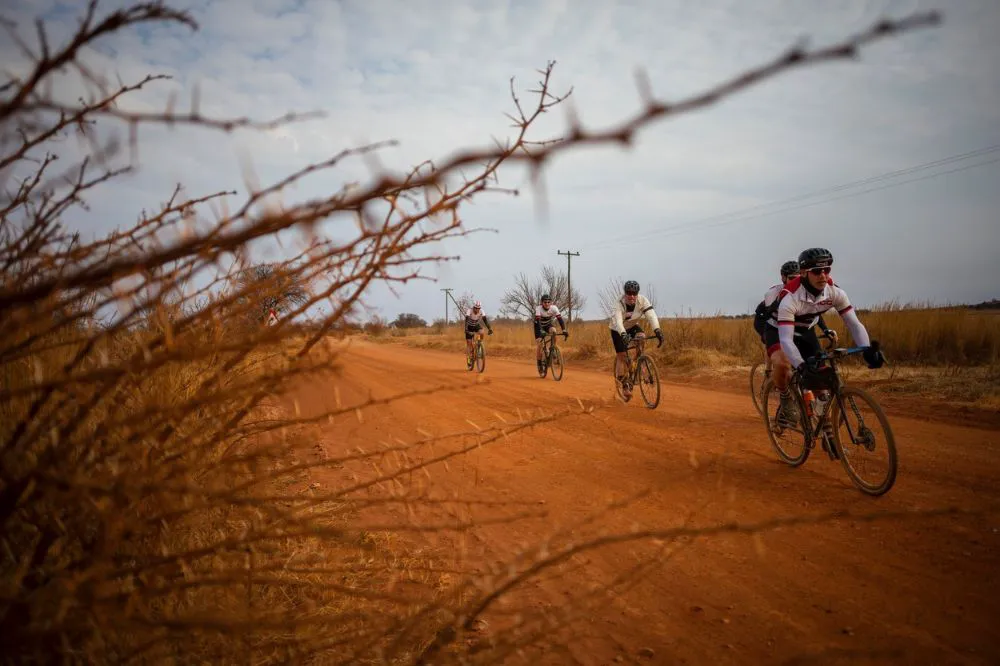Connect weight loss to a cycling goal
Before you set off on your weight-loss journey, it’s always important to think about your reasons. Is it to improve your health, body image, or performance? The cool thing about using cycling to support weight loss is that it helps with all three of those common reasons. And that’s exactly why you should use a cycling event instead of a number on a scale as your goal.
Cycling performance goes hand-in-hand with health and weight for a good reason. You can’t train enough if you’re ill or injured and you can go faster if you’re lighter. A key cycling metric is your power-to-weight ratio. You can calculate this by dividing how many watts you are able to consistently push on a bike by your body weight in kilograms. So, if you want to go faster uphill, you can do two things. Train your legs to produce more power and lose weight to become lighter. And you have to be smart about it too because losing weight too quickly often results in muscle loss.
Choosing a cycling event as a goal ties your weight loss to something measurable and timely. This also brings in other types of motivation. Maybe you tell your friends you signed up for a cycling race or you even have a buddy that will do it with you. Wanting to perform well, not let your friends down, and stay true to your word are all going to help you stay on track with training as well as your diet.

Aim for consistency
Unfortunately, healthy weight loss takes time. This means you can’t really rush things without risking that you’ll lose a lot of muscle and gain the fat back and then some. The best ally in healthy weight loss is consistency. If you look at your new diet and exercise routine as something that you’ll have to do for years to come, it helps you reframe the whole situation. You realize there’s no point in hurrying and risking burning out.
Over the long-term, you’ll see much better results if you make smaller changes but stay consistent in applying them. You don’t have to cram your schedule with daily rides if that doesn’t make sense in your case. Find what you can see yourself continuing even after you improve your weight.
Align your training schedule to regular mealtimes
On the more practical level, timing your rides well can be a big help for weight loss. Cycling can make you work up an appetite and adding more snacks to your diet can be a problem for losing weight. One thing you can do to avoid this is to go for a ride before breakfast, lunch, or dinner. This way, your post-ride snack is covered by your regular meal and you are likely to eat less overall and stay in a calorie deficit, which allows you to lose weight.
Increase the intensity
As a general rule, the faster you ride, the more calories you’ll burn as your legs have to work harder. Cycling at a leisurely pace for an hour can burn as little as 400 kcal, but riding at high intensity can easily burn double that—and the pros often burn upwards of 1,000 kcal per hour when racing. Adding some interval sessions to your schedule will help you stay in a calorie deficit. Check out our previous articles to see a few examples of what those sessions look like.
Measure your progress
Tracking progress is a powerful way to stay motivated. When it comes to your body weight it’s a good idea to weigh yourself every day, but only look at trends over the week or a month. Your weight will fluctuate and you don’t want to panic every time it doesn’t change as expected. Sometimes it may seem like your weight loss is stalling when in fact, you are just gaining some muscle as a result of training. This is when looking at your cycling performance can calm your nerves and help you stay on track. Whether you use a bike computer, fitness watch, or smart phone app, you’ll be able to easily see if you’re riding up that hill faster than last week.
In the next article, we’ll take a closer look at common diet mistakes cyclists who want to lose weight make around their training.




